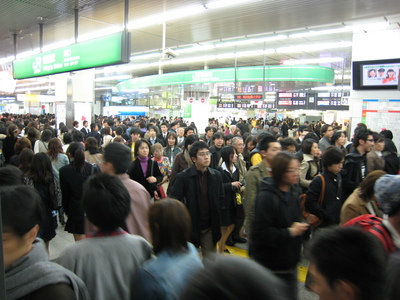 Everybody knows and loves sushi and there are now even sushi robots in London (not on the streets). Raw fish however isn't so good if your a vegetarian like me. Instead Japan offers a form of vegetarian cooking known as Shojin Ryori.
Everybody knows and loves sushi and there are now even sushi robots in London (not on the streets). Raw fish however isn't so good if your a vegetarian like me. Instead Japan offers a form of vegetarian cooking known as Shojin Ryori.
This is organic food before the term was invented. Only fresh seasonal ingredients are used and all processes are done by hand (machines aren't used at all). The cook has to show the utmost respect and concern for nature at all times.
A Japanese chef who ran a Shojin Ryori restaurant in Tokyo is Toshio Tanahashi. To read more about him and his food philosophy click here.
One essential ingredient of Japanese cooking is of course seaweed. Although little eaten in Britain it is, according to a radio documentary, becoming a booming business. In the west coast of Ireland nori, a type of Japanese seaweed, is being cultivated in the clean coastal waters. In that part of Ireland some locals have long since realized the health benefits. To listen to a fascinating podcast about seaweed and Japanese food click here.



















